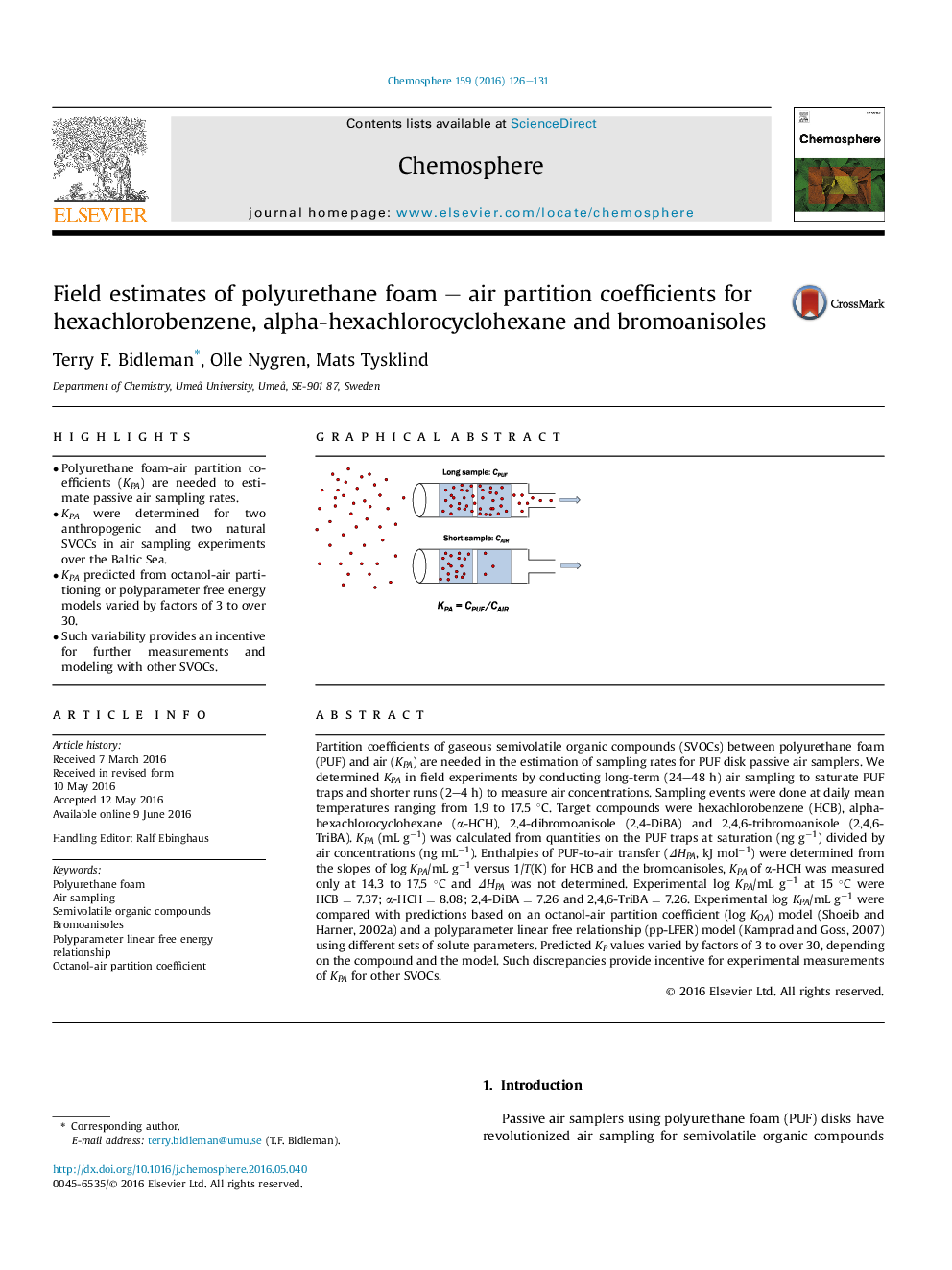| کد مقاله | کد نشریه | سال انتشار | مقاله انگلیسی | نسخه تمام متن |
|---|---|---|---|---|
| 4407412 | 1618812 | 2016 | 6 صفحه PDF | دانلود رایگان |
• Polyurethane foam-air partition coefficients (KPA) are needed to estimate passive air sampling rates.
• KPA were determined for two anthropogenic and two natural SVOCs in air sampling experiments over the Baltic Sea.
• KPA predicted from octanol-air partitioning or polyparameter free energy models varied by factors of 3 to over 30.
• Such variability provides an incentive for further measurements and modeling with other SVOCs.
Partition coefficients of gaseous semivolatile organic compounds (SVOCs) between polyurethane foam (PUF) and air (KPA) are needed in the estimation of sampling rates for PUF disk passive air samplers. We determined KPA in field experiments by conducting long-term (24–48 h) air sampling to saturate PUF traps and shorter runs (2–4 h) to measure air concentrations. Sampling events were done at daily mean temperatures ranging from 1.9 to 17.5 °C. Target compounds were hexachlorobenzene (HCB), alpha-hexachlorocyclohexane (α-HCH), 2,4-dibromoanisole (2,4-DiBA) and 2,4,6-tribromoanisole (2,4,6-TriBA). KPA (mL g−1) was calculated from quantities on the PUF traps at saturation (ng g−1) divided by air concentrations (ng mL−1). Enthalpies of PUF-to-air transfer (ΔHPA, kJ mol−1) were determined from the slopes of log KPA/mL g−1 versus 1/T(K) for HCB and the bromoanisoles, KPA of α-HCH was measured only at 14.3 to 17.5 °C and ΔHPA was not determined. Experimental log KPA/mL g−1 at 15 °C were HCB = 7.37; α-HCH = 8.08; 2,4-DiBA = 7.26 and 2,4,6-TriBA = 7.26. Experimental log KPA/mL g−1 were compared with predictions based on an octanol-air partition coefficient (log KOA) model (Shoeib and Harner, 2002a) and a polyparameter linear free relationship (pp-LFER) model (Kamprad and Goss, 2007) using different sets of solute parameters. Predicted KP values varied by factors of 3 to over 30, depending on the compound and the model. Such discrepancies provide incentive for experimental measurements of KPA for other SVOCs.
Figure optionsDownload as PowerPoint slide
Journal: Chemosphere - Volume 159, September 2016, Pages 126–131
